We are reader supported. When you purchase through links on our site, we may earn an affiliate commission. Also, as an Amazon affiliate, we earn from qualifying purchases.
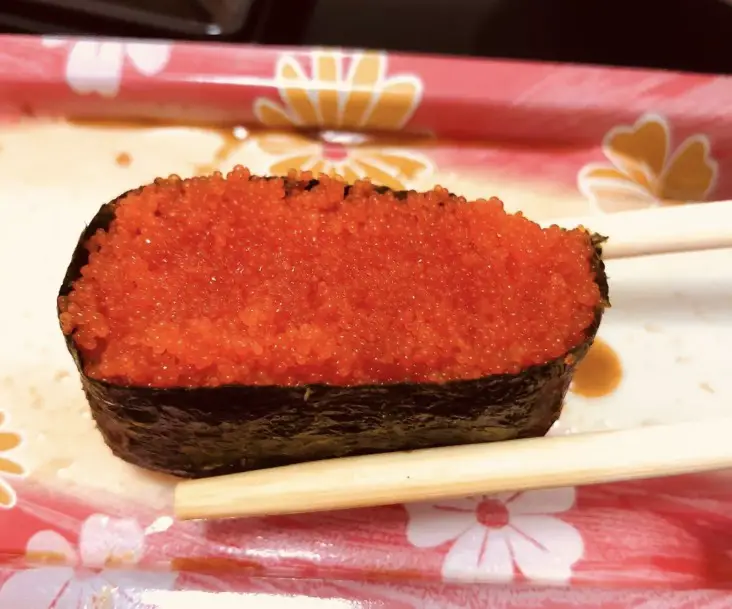
If you are a sushi lover that likes to experiment, you need to know what is tobiko sushi. Besides the traditional nigiri sushi and some other Japanese dishes like sashimi, some exciting sushi combinations often have fish eggs.
So, what is exactly tobiko sushi? Tobiko sushi or flying fish roe sushi is a type of sushi that consists of fish roe from the flying fish and Japanese seaweed called nori.
Yes, there are many different sushi varieties, and fish roe is often used in Japanese cuisine, and so even in sushi. Are you surprised now? Stick with us, and you will find out everything there is about tobiko sushi, and after reading, you might want to consider trying it!
Contents
What is Tobiko sushi?
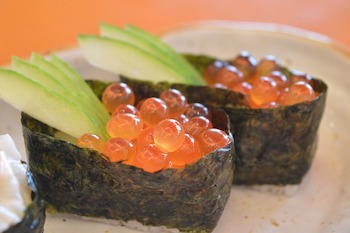
Tobiko sushi is sushi that consists of fish roe that comes from flying fish, and while it is similar to salmon roe (or ikura), the eggs are very different in size and taste. Besides flying fish eggs, there is also a sheet of nori seaweed and of course rice. These three ingredients combined together form tobiko sushi.
That’s usually all there is in tobiko sushi. Although simple at first glance, tobiko sushi is a delicacy of its own. Tobiko’s natural color is red-orange, has a soft, salty taste and a very crunchy texture.
Sometimes in tobiko sushi can be added some natural ingredients, and it can be in different color. For example, when squid ink is added the sushi will be black or if wasabi is added the color will be green and the taste will be spicier. That’s why one serving of tobiko can have different colors.
When you want to prepare tobiko as sashimi, it can be presented on avocado halves. Tobiko, or flying fish roe, is often used as an ingredient in different sushi rolls, such as the most popular one – California roll.
Tobiko sushi is can also make Tobiko gunkan sushi – because of its oval shape. Gunkan means “battleship” in Japanese and the looks are very similar to one. Gunkan is a common name for any sushi roll that has nori, sushi rice on the bottom and roe – whether is that salmon roe, flying fish roe or sea urchin roe.
Why is tobiko added? Usually sprinkled on top of a variety of sushi rolls, but not just for its good looks – the texture is crunchy, and its flavor is delicious!
How does Tobiko sushi taste like?
Well, tobiko is crunchy, salty and adds a beautiful visual appealing to your sushi. Biting your tobiko sushi will give you a satisfying crunchy feeling (and sound!).
You can choose between the different ways of enjoying tobiko – either in tobiko sushi or in different sushi styles. Compared to for example salmon roe, flying fish eggs are more robust and smaller – that’s why they are a popping sensation when you chew them!
A lot of sushi lovers enjoy in tobiko just because of this unique feature and the overall uncommon texture. As mentioned, often are some ingredients added like wasabi or soy sauce that influence its color and taste.
How to make Tobiko sushi
We got you interested, and now you want your homemade tobiko sushi? Great! It is also easier to make than regular sushi rolls, and you need about 10 minutes to prepare this delicious meal.
For making tobiko sushi, you just need these three ingredients:
• Four tablespoons of Tobiko (flying fish roe)
• Half a cup of prepared Sushi Rice
• One sheet of Nori (seaweed)
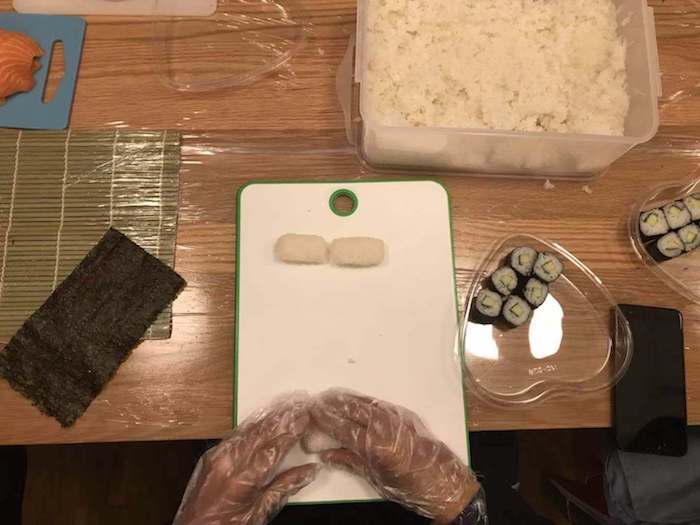
Step 1: Wet your hands, take a half-handful of sushi rice and create four ovals of rice, each one inch full by two inches long.
Step 2: Take your nori sheet and cut it approximately 1-inch width. With nori we are going to wrap the sushi – it acts like a vessel that is holding the crunchy popping tobiko roe, making it tasty tobiko sushi!
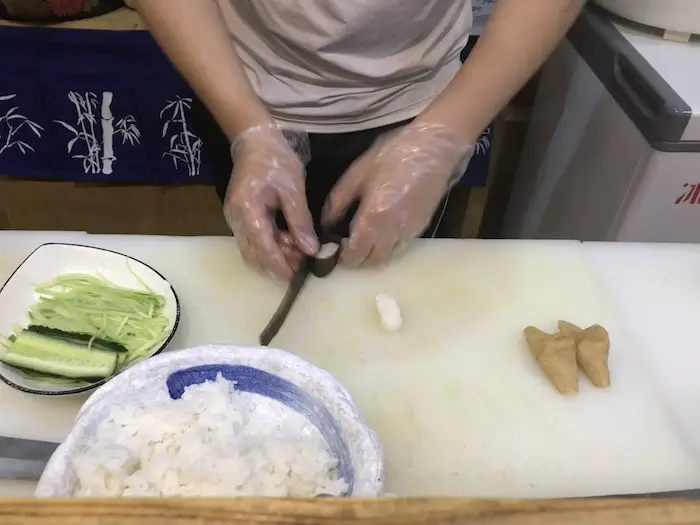
Step 3: It’s wrapping time! Wrap one nori strip around the oval-shaped rice (cylinder) rice. Make sure to leave the space above the rice that is surrounded by nori. Dip one finger in water and use it to seal the nori strip at the end.
Step 4: Push the rice a bit more down and add one tablespoon of the tobiko in this space – meaning on the top of rice. Serve immediately to avoid nori getting soggy.
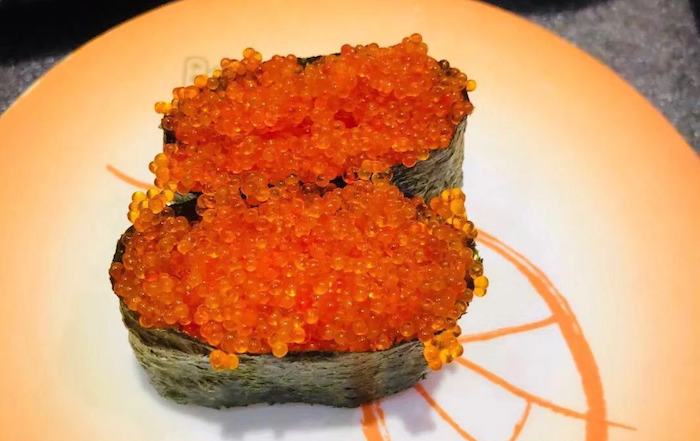
Step 5: Add a bit of shoyu, wasabi or ginger if you want!
Easy like that! All that you have to do is enjoy in your battleship sushi!
How do you eat Tobiko sushi?
Thanks to the growing popularity of sushi all over the globe you can eat tobiko sushi in any sushi restaurant or even enjoy in tobiko sushi delivery.
Regarding the eating of tobiko sushi – it’s pretty straightforward. The design is pragmatic because of the particular shape of the rice and seaweed that holds the tobiko eggs in one place.
Our recommendation is to eat tobiko sushi with chopsticks – it will be much easier since tobiko is bigger than for example nigiri sushi. For extra flavor add a little bit of ginger and a subtle dose of wasabi. This will underline the delicious tobiko flavors.
What is Tobiko?
Tobiko is one of the most cherished sushi roes, often added as a finishing touch to sushi rolls but also eaten alone with only sushi rice and nori.
Tobiko is the fish roe of tropical flying fish, and it’s known for its delicious salty taste and popping sensation in the mouth. It’s crunchy texture and a golden-red color makes is a favorite ingredient in many rolls. Its bright-red color is in contrast with its mild taste that is sweet yet salty.
There is little more satisfying when eating sushi that the crunchy sound of biting the tobiko – that’s why it’s often added to different sushi rolls. While tobiko is usually used in sushi, it can be enjoyed on cracker, omelets or in salads.
When talking about nutritional ingredients tobiko is full of proteins, vitamins, and omega 3-fatty acids but be careful with consummation because of the high cholesterol content.
If you eat sushi regularly you have probably tried tobiko in many sushi combinations.
Is Tobiko sushi healthy
As we mentioned above, tobiko sushi is filled with protein, vitamins, selenium and omega 3-fatty acids. It is incredibly nutritious, but you cannot take it for granted.
The tobiko roe contains a high amount of cholesterol, so you should be careful about how much you eat it. As it is often used just as a garnish and no more than a tablespoon size it can still be considered a healthy meal.
Where to get Tobiko for your sushi?
You can definitely check at any Asian store or Japanese grocery store for tobiko. At these specific places, you can find tobiko in small sauce cups, but you can also buy them frozen and in larger packaging.
Moreover, you can try and look at your local grocery store in the seafood section – some of them may have it.
The final option you have is online stores like – Amazon. Among many things there you can also find all types of roe, and tobiko as well.
Related Questions
What is the difference between tobiko and masago?
Tobiko and masago are often mistaken for one another, and between new sushi lovers, there are often many confusions. So, what is the main difference?
Masago is a smaller, duller egg of a different fish called capelin, while tobiko is roe from flying fish egg. In comparison, tobiko is larger, brighter and crunchier than masago.
The flavor of tobiko is more intense and saltier compared to masago; that’s why it’s often used in gunkan sushi. For those who flavor less intense fishy taste, masago is a better option. Tobiko has a smoky taste and more volume than masago, or capelin roe, that’s why it’s more valued.
Both of these fish roe contain lots of vitamins, protein and omega 3 fatty acids, so nutritionally they are the same quality.
Regarding the price, masago is more budget-friendly than tobiko, and many restaurants use masago in their dishes while stating that it is tobiko. So be careful on what you get served!
For more information on masago check out our article: Masago Sushi: The Beginner’s Guide(Recipes)
Is ikura the same as tobiko?
Definitely not. Ikura is the Japanese name for salmon roe. As we already talked about it, there are many differences between them.
Salmon roe is usually less salty and has a sweet flavor. Traditionally, this type of roe is salted with sea salt, and it’s one of the crucial parts of Japanese culture – and you can find it in any sushi bar.
Salmon roe or ikura is bigger than tobiko and can be easily identified by its size.
For more detailed explanation visit: https://bondcaviar.com/blogs/caviar-101/caviar-ikura-tobiko-and-masago
How to eat tobiko besides in sushi?
In addition to eating delicious tobiko sushi, you can:
• Add tobiko on salads to add color, taste, and texture. The taste and looks would partner well with avocado salad
• Add a tablespoon of tobiko on your crackers – this simple meal can be served as a cold appetizer
• Add tobiko to any egg recipe and especially after work out – it will be a real protein boost
• Pasta with tobiko? Yes! Add a bit of tobiko to any creamy sauce you will make with your pasta
• Lastly – mix it up with anything you feel like trying!
More information’s find out on: https://blog.fitoru.com/tobiko-vs-masago-nutrition-benefits-pros-and-cons/
See Also:
How Long Does Sushi Last? (Detailed Explanation)
Best Sushi Rolls For Beginners to Try
Teriyaki Chicken Sushi Roll Recipe
What Is Hamachi Sushi? Read This First!
Does Sushi Have Egg?


